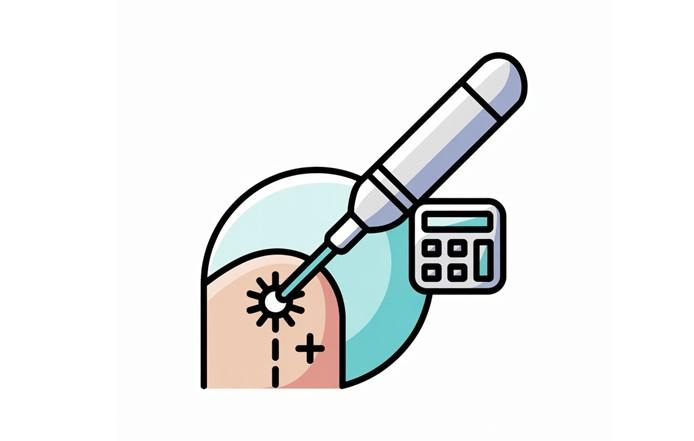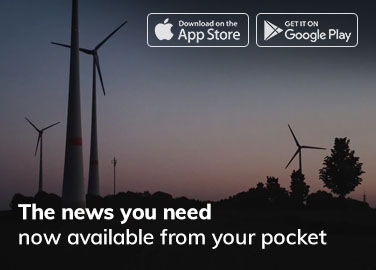Tattoo Removal Cost Calculator
Estimate sessions and cost based on size, colors, age, placement, skin tone, clinic, and laser tech
Tattoo Details
Placement & Skin
Clinic & Laser Technology
Pricing & Extras
Estimated Tattoo Removal Cost

Free Tattoo Removal Cost Calculator 2025: Step-by-Step Guide, Formula
Planning a tattoo removal and want a fast, realistic cost estimate? This guide shows you exactly how to use the Tattoo Removal Cost Calculator, explains the math behind it, and walks through real-world examples so you can budget confidently.
What this calculator estimates
- Per-session price (based on tattoo size, clinic, location, and laser tech)
- Estimated number of sessions (based on ink complexity, age, placement, skin tone, and laser tech)
- Package discounts and consultation fees
- Total project cost
Key cost drivers
- Tattoo size: Sets the base per-session price range
- Extra small (≤ 2 sq in): $100–$200
- Small (≤ 4 sq in): $150–$250
- Medium (≤ 6 sq in): $200–$350
- Large (≤ 10 sq in): $300–$500
- Extra large (> 10 sq in): $400+
- Ink/colors & density: Simple black/faded is faster; dense/new/multi-color takes longer
- Tattoo age: Older, faded tattoos usually respond faster than new, saturated ink
- Placement: Torso/upper body tends to clear faster than ankles/hands/feet
- Skin tone: Darker tones may require gentler settings and more sessions
- Clinic & location: Premium specialists and high-cost markets charge more
- Laser technology: Picosecond lasers (PicoSure/PicoWay) can reduce sessions but laser tattoo removal price more per session
- Packages & consults: Some clinics discount multiple sessions; some charge a consult fee
Inputs explained
- Tattoo size: Small (≤3 sq in), medium (≈4–20 sq in), large (20–60+ sq in). Size correlates with time/energy used.
- Colors: Black/gray (easiest), red/orange (moderate), green/blue/teal (harder), white/yellow (hardest).
- Body location: Areas with less blood flow (ankle, foot, hand) often need more sessions than torso/upper arm.
- Age and density: Older, faded, amateur ink is typically easier than fresh, saturated professional work.
- Layering/cover‑up: Stacked pigments usually add sessions.
- Skin tone (Fitzpatrick I–VI): Darker skin tones require conservative settings/longer intervals to minimize pigment changes.
- Laser type: Q‑switched (nanosecond) vs picosecond (e.g., 532/755/1064 nm). Pico may reduce sessions but costs more per session.
- Add‑ons: Numbing (0–0–50), aftercare kit (10–10–30), eye shields for brows (10–10–40).
- Region: Local market pricing (low/average/high‑cost metro).
How to use the calculator (step by step)
- Select your tattoo size category
- Choose Extra small, Small, Medium, Large, or Extra large.
- Use the average price or set a custom per-session price within the size range.
- Describe the ink and density
- Simple black/faded, Typical mix, or Dense/new/multi-color.
- Provide age, placement, and skin tone
- Age: Over 5 years, 1–5 years, Under 1 year
- Placement: Torso/upper body, Forearm/calf, Ankle/hand/foot
- Skin tone: Light, Medium, Dark
- Choose clinic, location, and laser technology
- Clinic: Standard or Premium
- Location: Lower-cost, Average, High-cost, Major metro
- Laser: Q-switched (standard) or Picosecond (PicoSure/PicoWay)
- Add optional pricing details
- Package discount (% off the sessions subtotal)
- Consultation fee ($)
- Click “Calculate Cost”
- The results panel appears with:
- Adjusted per-session tattoo removal Price
- Estimated tattoo removal sessions estimate
- Sessions subtotal
- Package discount and consult fee
- Total estimated cost
The exact formula (transparent math)
- Sessions (rounded up)
Sessions = ceil(BaseSessions × AgeFactor × PlacementFactor × SkinFactor × LaserSessionFactor)
Then clamped between 1 and 20 sessions for realism. - Per-session price
PerSession = BasePrice(size) × ClinicFactor × LocationFactor × LaserPriceFactor - Total cost
SessionsSubtotal = PerSession × Sessions
Discount = SessionsSubtotal × (Discount% / 100)
Total = SessionsSubtotal − Discount + ConsultationFee
Multipliers used by the calculator
- Base sessions by ink complexity:
- Simple black/faded: 7
- Typical mix: 9
- Dense/new/multi-color: 11
- Session adjustment factors:
- Age: Over 5 years 0.95, 1–5 years 1.00, Under 1 year 1.10
- Placement: Torso 0.95, Forearm/Calf 1.00, Ankle/Hand/Foot 1.15
- Skin tone: Light 1.00, Medium 1.05, Dark 1.15
- Laser tech (sessions): Q-switched 1.00, Picosecond 0.85
- Price adjustment factors:
- Clinic: Standard 1.00, Premium 1.15
- Location: Lower-cost 0.90, Average 1.00, High-cost 1.15, Major metro 1.30
- Laser tech (price): Q-switched 1.00, Picosecond 1.25
Worked examples
Example 1: Medium tattoo, multi-color, average market, standard clinic, Q-switched
- Inputs
- Size: Medium → Base price = $275 (average within $200–$350)
- Ink complexity: Dense/new/multi-color (base sessions = 11)
- Age: 1–5 years (1.00)
- Placement: Forearm/calf (1.00)
- Skin tone: Medium (1.05)
- Laser: Q-switched (price ×1.00, sessions ×1.00)
- Clinic: Standard (×1.00)
- Location: Average (×1.00)
- Discount: 0%
- Consultation: $0
- Sessions: ceil(11 × 1.00 × 1.00 × 1.05 × 1.00) = ceil(11.55) = 12 sessions
- Per-session price:
$275 × 1.00 × 1.00 × 1.00 = $275.00
Total:
Sessions subtotal = $275 × 12 = $3,300.00
Discount = $0.00
Consultation = $0.00
Estimated total = $3,300.00
Example 2: Same tattoo, Premium clinic in a high-cost city, Picosecond laser, 10% package discount
- Inputs
- Size: Medium → Base price = $275
- Ink complexity: Dense (base sessions = 11)
- Age: 1–5 years (1.00), Placement: Forearm/calf (1.00), Skin: Medium (1.05)
- Laser: Picosecond (price ×1.25, sessions ×0.85)
- Clinic: Premium (×1.15)
- Location: High-cost (×1.15)
- Discount: 10%, Consultation: $0
- Sessions: ceil(11 × 1.00 × 1.00 × 1.05 × 0.85) = ceil(9.8175) = 10 sessions
- Per-session price:
$275 × 1.15 × 1.15 × 1.25 ≈ $454.61
Total:
Sessions subtotal ≈ $454.61 × 10 = $4,546.09
Discount (10%) ≈ $454.61
Estimated total ≈ $4,546.09 − $454.61 + $0 = $4,091.48
Example 3: Extra-small, older black tattoo on torso, small town; Q-switched vs. Picosecond comparison
- Inputs (both scenarios)
- Size: Extra small → Base price = $150 (average within $100–$200)
- Ink: Simple black/faded (base sessions = 7)
- Age: Over 5 years (0.95), Placement: Torso (0.95), Skin: Light (1.00)
- Clinic: Standard (×1.00), Location: Lower-cost (×0.90)
A) Q-switched:
- Sessions: ceil(7 × 0.95 × 0.95 × 1.00 × 1.00) = ceil(6.3175) = 7
- Per-session: $150 × 1.00 × 0.90 × 1.00 = $135.00
- Total: 7 × $135.00 = $945.00
B) Picosecond:
- Sessions: ceil(7 × 0.95 × 0.95 × 1.00 × 0.85) = ceil(5.3699) = 6
- Per-session: $150 × 1.00 × 0.90 × 1.25 = $168.75
- Total: 6 × $168.75 = $1,012.50
Takeaway: Picosecond reduces sessions, but higher per-session pricing may or may not lower your total cost. Packages/discounts can change the outcome.
2025 Cost Ranges at a glance
Per‑session (typical)
- Small (up to 2×2 in): 100–100–250 (Q‑switched) | 200–200–350 (pico)
- Medium (≈4×6 in): 250–250–500 (Q‑switched) | 400–400–650 (pico)
- Large (sleeve/back piece areas): 400–400–1,000 (Q‑switched) | 600–600–1,200 (pico)
Estimated sessions by complexity
- Simple black linework: 3–6 sessions
- Black/gray shaded: 4–8 sessions
- Multicolor (red/orange/blue/green): 6–12+ sessions
- Cover‑up over old tattoo or dense saturation: +2–4 sessions
- Lower leg/hand/finger: +1–3 sessions vs upper arm/torso
- Picosecond lasers: often reduce sessions by ~20–35% compared to Q‑switched (varies by color/clinic)
Common extras
- Consultation/test patch: 0–0–50
- Numbing cream/local anesthetic: 0–0–50 per session
- Aftercare kit: 10–10–30
- Protective eye shields (brows/eyeliner): 10–10–40
Tips for better estimates (and smarter budgeting)
- Pick the right size tier: Use your clinic’s map or measure the tattoo area to avoid underestimating.
- Be honest about color and density: More colors and dense fill mean more sessions—choose “dense/new/multi-color” when in doubt.
- Placement matters: Ankles, hands, and feet often require extra sessions; choose “Ankle/hand/foot” if applicable.
- picosecond vs q-switched cost: Run both scenarios with/without a package discount to see which actually costs less overall.
- Account for consults and packages: If your clinic credits the consult to session 1 or discounts bundles, reflect that for accuracy.
Frequently asked questions
You can explore Similar Calculator like this Free Online Adu cost calculator 2025.

